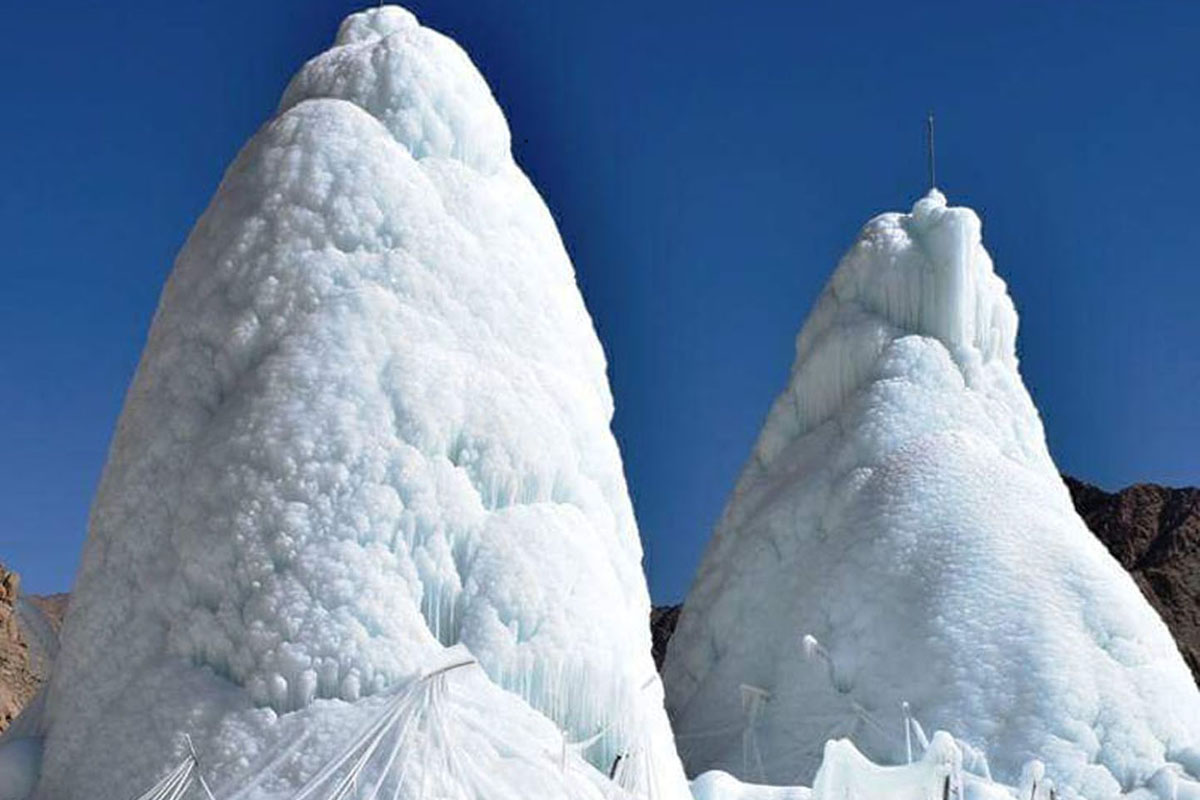The ongoing harsh winter and heavy snowfall have charged the man made glaciers (ice stupas) in Ladakh that will meet the water requirements of the area during the summers.
These artificial glaciers provide abundant water during summers in the Phayang and adjoining areas of Ladakh where the temperature was hovering around -20 degrees Celsius. These are also being seen as the answer to the water shortage that has started appearing in Ladakh during summers.
Advertisement
The cold desert area has gradually started greening as the enterprising residents of the area have found out the technique of building Ice Stupas (artificial glaciers) that not only store water for irrigation but can also be a solution to the challenge of melting glaciers.
The Ice Stupa technique to conserve water was developed by a local engineer Chewang Norphel by building 12 artificial glaciers in 2012. The largest glacier created by him was in the Phuktsey village near Leh.
Inspired by Norphal’s work, Sonam Wangchuk introduced the prototype method to build the Ice Stupa that was a solution to the water crisis faced by Ladakhi farmers during the critical planting season of April and May before the natural glacial melt water starts flowing.
The idea behind artificial glaciers is to freeze and hold the water that keeps flowing and wasting downstreams throughout the winters.
The technology is simple and can also be adopted by farmers in the Lahaul-Spiti and Kinnaur districts of Himachal Pradesh that are also cold deserts with similar topography.
Fresh artificial glaciers have been built in the Phyang valley near Leh where youth of the area are involved in the innovative work.
According to Wangchuk, the ice formation has been named Ice Stupa because these resemble the traditional stupas of Ladakh and Tibet. These ice mountains are built when the temperature in Ladakh dips to -20 to -30 degrees Celsius.
Residents of the cold desert have started feeling the pinch of the natural glaciers becoming smaller in size resulting in less water in early spring and lots more during the summer.
The idea of making artificial glaciers is not new and elderly people of the area say that residents of Ladakh and Baltistan used to graft artificial glaciers on a height of above 14,000 ft. but their method was not very scientific. However, Norphel worked on freezing waste water in vast fields in winters.
After discussing the issue with Norphel, Wangchuk started working on a new approach in which glaciers were free of location, frequent maintenance, and shading requirements. The stream water was vertically frozen by him in the shape of 30 to 50 metre towers just near the village where irrigation was required. This required little investment of laying pipes to carry water to the desired location.
The method to create the Ice Stupa is based on the gravity system by blowing the water up in the air with pipes and it freezes by the time it touches the ground.
In order to test the idea in 2014 at the Students Educational and Cultural Movement of Ladakh (SECMOL) Alternative Institute, a prototype was built at a place fully exposed to sunlight in the Phey village.
The SECMOL is involved in carrying forward the path shown by Wangchuk who was awarded the Rolex Award for his enterprise in 2016. He is also a recipient of the Ramon Magsaysay award for his innovative works.
